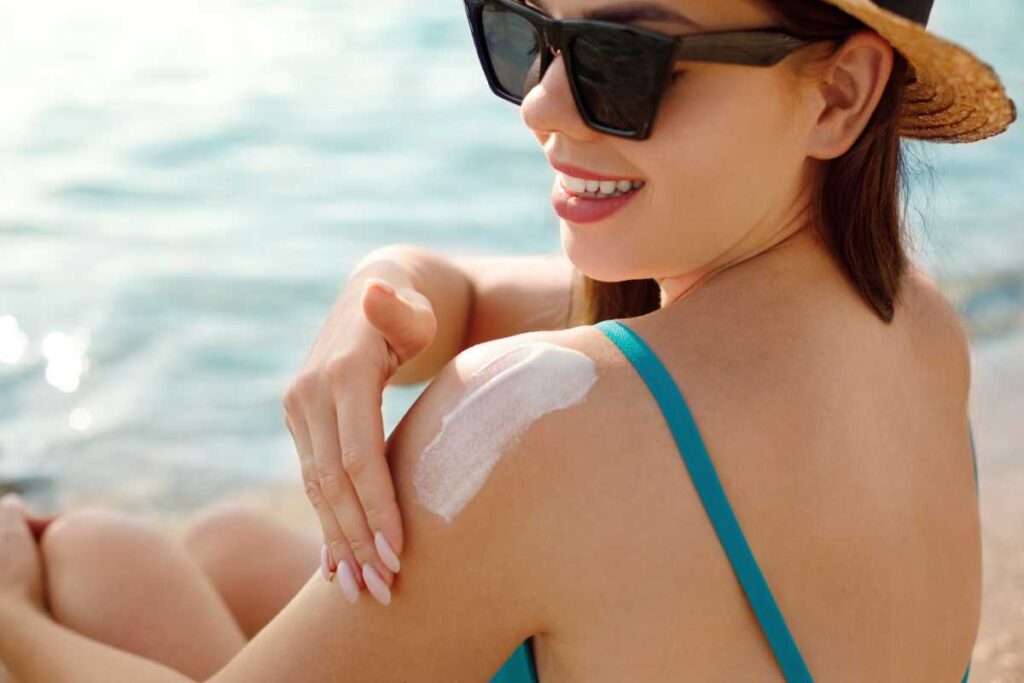
As summer temperatures soar, New York City residents are increasingly vulnerable to skin conditions such as sunburn and rashes. This season has witnessed record-high temperatures, with peaks reaching up to 100 degrees. Data from the Behavioral Risk Factor Surveillance System indicates that nearly 30% of adults in New York State experienced at least one sunburn in the past year. Alarmingly, over 50% of Americans do not use sunscreen, heightening the risk of serious skin disorders, including skin cancer.
Dr. Asha Patel Shah, Head of Medical Affairs NA, Skin Health & Beauty at Kenvue, offers crucial insights into sunburn and skin safety. Understanding the causes and signs of sunburn, particularly during the summer months, is essential for prevention and treatment.
Understanding Sunburn
Sunburn results from an acute inflammatory reaction due to exposure to ultraviolet (UV) radiation from the sun or artificial sources such as tanning beds. Dr. Shah explains, “The UV rays penetrate your skin and trigger an inflammatory cascade, leading to redness, warmth, pain, and sometimes blistering.”
Research published in the American Journal of Preventive Medicine suggests that between 28% to 53% of children have a history of sunburn. Studies from Western Michigan University have found that both children and adults who spend significant time outdoors, particularly between 10 a.m. and 4 p.m., are at greater risk. Dr. Shah notes that children are especially vulnerable due to their developing skin, which lacks the robust natural defenses present in adults.
Identifying Sunburn Across Skin Tones
Recognizing the signs of sunburn is vital for effective prevention and treatment. Symptoms can vary significantly across different skin tones. Dr. Shah advises looking for irritated, flushed skin, tenderness, and redness, which may present differently based on skin color.
“For individuals with lighter skin, redness is usually very obvious,” she states. “But for those with darker skin tones, the signs may appear as pink, purple, or a deeper shade of their existing skin.” The acute stages of sunburn can often go unnoticed in people with darker skin, with peeling being one of the few obvious indicators.
A prevalent misconception is that individuals with darker skin cannot get sunburned. Research from the Centers for Disease Control indicates that between 9% to 13% of Black men and women report experiencing at least one sunburn annually. Children, including infants, are particularly susceptible to sunburn, and parents should monitor them for signs of dehydration, such as reduced wet diapers, dry mouth, and unusual fussiness.
Dr. Shah warns, “Just one blistering sunburn in childhood can double a person’s lifetime risk of melanoma.” Prolonged sun exposure can also lead to premature skin aging, manifesting as uneven skin tone, age spots, and fine lines.
What to Do If Your Child Gets Sunburned
If a child suffers from sunburn, it is essential to act quickly. Dr. Shah emphasizes that this is a common occurrence and does not reflect poor parenting. Treatments can often be managed at home, depending on the severity of the burn.
“Immediately get your child out of the sun and into the shade or indoors,” she advises. Cooling the skin with cool compresses or a lukewarm bath can provide relief. Direct ice contact should be avoided as it can cause further damage. Topical treatments such as aloe vera are beneficial for soothing the skin, while colloidal oatmeal baths can help children with eczema or sensitive skin. If blistering or bleeding occurs, parents should seek medical attention.
Summer Skin Safety Tips
Dr. Shah encourages parents and individuals alike to embrace shade whenever possible. Keeping children out of direct sunlight during peak hours—typically between 10 a.m. and 4 p.m.—is crucial. Protective clothing such as long sleeves, wide-brimmed hats, and UV-protected sunglasses should be worn.
Utilizing broad-spectrum, water-resistant sunscreen with an SPF of 30 or higher is essential for effective skin protection. Dr. Shah concludes, “Enjoying the outdoors is very important, but doing so responsibly and safely is key.”
By following these guidelines, New Yorkers can better protect their skin and enjoy the summer while minimizing the risk of sun-related health issues.







